So. We’ve been going along swimmingly – until we hit Ben Eoin (pronounced Ben Yawn which is appropriately named since we’re not sleeping well here). And at that point, I started stating facts. It’s not complaining. It’s fact-stating. I don’t care what Blaine might tell you. So now we see the “ugly” side of Canada. And me. And a little bit of Blaine.
Our new campsite is not quite as advertised. Yes, it looks like the picture. And yes, we can see water. But we’re on a piece of land that’s called ‘overflow’. The reason it’s overflow is because the entire campground except for the small piece we’re on is filled with seasonals. There are no transients to be had. We know, because we walked the park. Our ‘water view’ is thru the row of boats being stored in front of us. There are street lights, a roadside sign light and outside office lights that stay on all night. And a busy road just a few hundred feet from the back of our coach. (Sigh . . .) And, when we walked around the park, we found a trash pile!
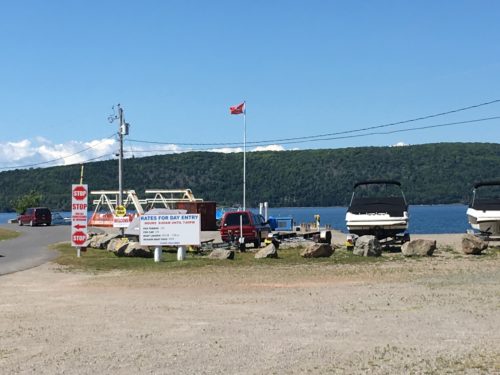
The water view
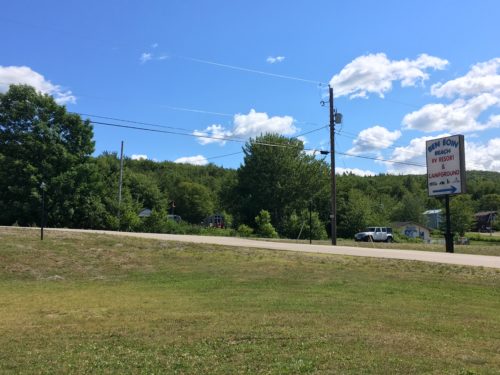
The street behind us

The office – also in front of us. You can see campers lined up in the background.
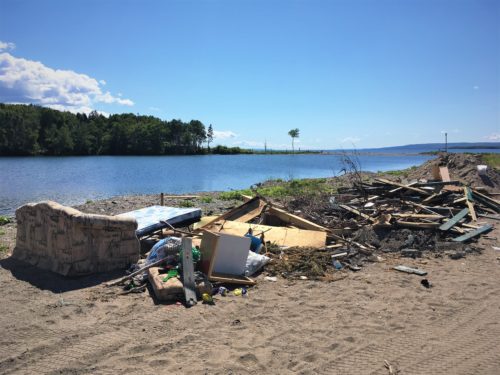
The trash – right at the end of where people live!
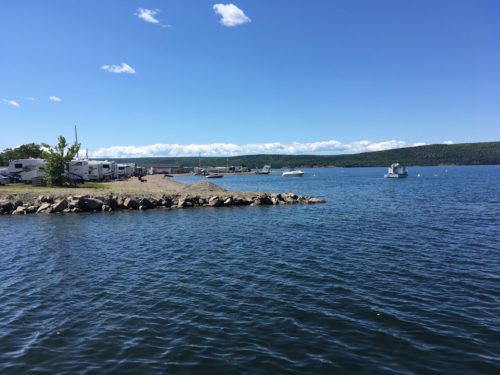
The next couple are from our walk around. Pretty, but crowded!
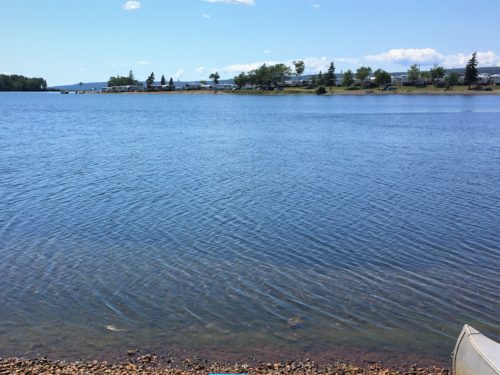
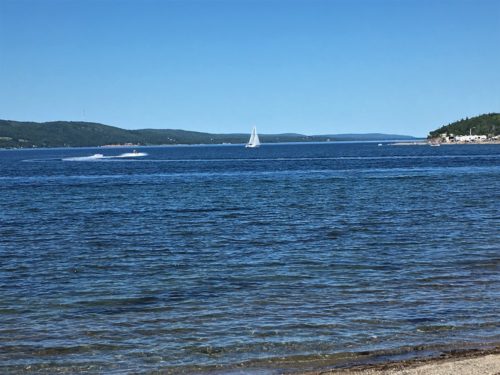
I know I make it sound awful, but it’s really not. I’m just in a mood.
I was already suffering from a bit of emotional disturbance because 2 friends and a family member were in crisis and I couldn’t be there for them. That’s the down-side to full-timing. . .
Then Blaine has this bright idea to go drive down the street at 6:45pm and go for a short ½ mile hike. Yeah. Well. I know he had no idea, but it was ½ mile straight up! I don’t much care for mountain climbing in the evening. I’m a morning exercise person. Anyway, we made it to the top and had our view, then trudged back down again. Well. I trudged. I was still fact-stating in my head. Blaine was enjoying the woods around us.
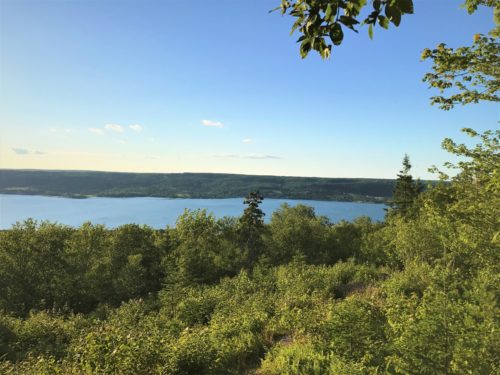
The view from the top
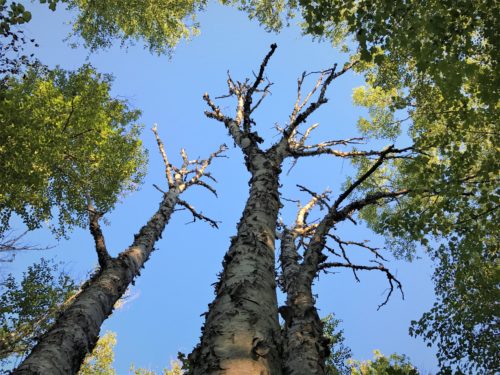
On the trail
Now, when we arrived, we saw a parked van with a man inside. When we came back down. It was still there, but left as soon as we came off the trail. I think he saw we were from Ohio and was waiting for us to make sure we got back safely and when he saw us, he left. I don’t know if that’s the case, but that’s what I’m telling myself. It makes me feel better and based on what I’ve seen of people in Canada, it’s perfectly plausible.
So now it’s a new day. We had plans to visit Fortress Louisbourg. It’s a fantastic, enormous, reconstructed fortress from 1744. It’s a Canadian National Historic Site (can you say, FREE?) and is the largest – and best – of its kind in North America. (that’s a quote from their ad)
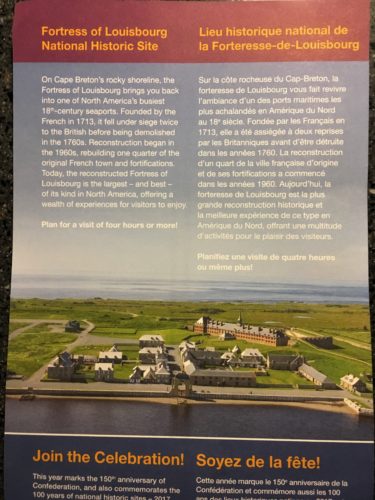
This is on their brochure.
It shows the size of this place
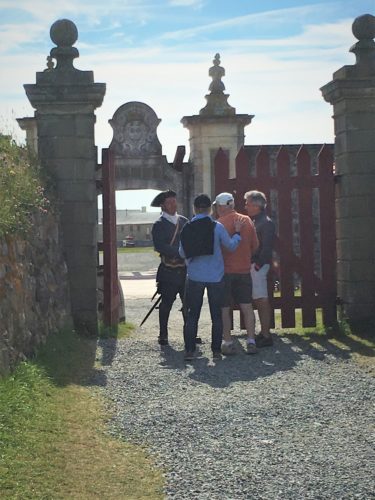
We were ‘interrogated’ by a guard looking for spies before we could go in. Fun way to begin!
Do you know the difference between a fort and a fortress? (Play the Jeopardy theme song in your head while you think about it)
Got it? No? The answer is – a fort is strictly military personnel. A fortress encompasses and protects a town and has both military and civilians. (Sorry. I couldn’t figure out how to phrase it as a ‘What is’ question.)
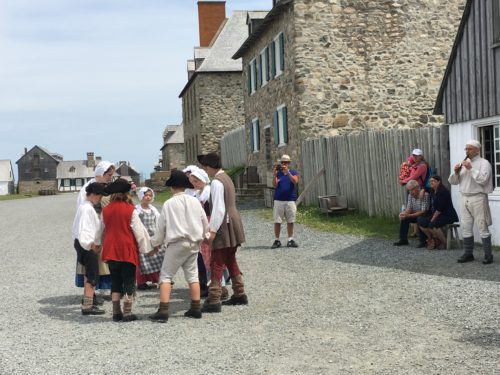
Kids playing
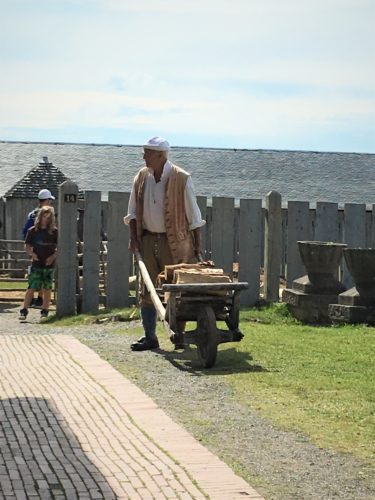
Civilians within the gates
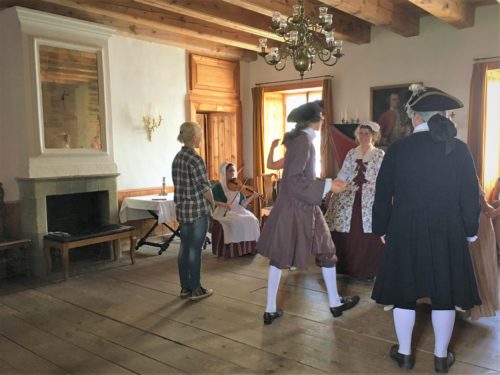
The upper class dancing – sometimes as many as 20-30 couples! The girl in plaid was a volunteer to learn the dance they were doing.
Blaine woke up with a headache. It didn’t go away. He was a little (just a little) testy all day. Which meant he didn’t fully enjoy the day and I had to bite my tongue a couple of times. He was probably doing a little fact-stating in his head, too. I felt bad for him. Truly, he was a real trooper.
One thing we’ve noticed in all the parks we’ve been to is that the staff approach you and make you feel welcome and offer information without you hunting them down. This place was no exception. America could learn a lot from Canada in this department!
This fortress reconstruction has been in the making since the 1920’s when it was designated as a historic place, even though there was nothing left of it. It was originally French and built to protect the VERY important cod fishing industry they had. France sent everything they needed because they didn’t want the people to become independent so no one was allowed to have their own ‘industry’. So, France would send the salt (or whatever). The civilians would catch and dry the fish (which took 6 weeks or more), then send the fish back to France (another 6 weeks or more). Etc., Etc. The “New Englanders” (loyalists to England) decided this sounded like a good income for England so they attacked the fortress. About 300 of them were captured by the French. The French let the officers roam around town and the officers scoped out the place and sent word to the New Englanders how to best plan their attack. They captured it with no problem. Not the brightest idea the French have ever had, eh? (The ‘eh’ is Canada speak 😊)
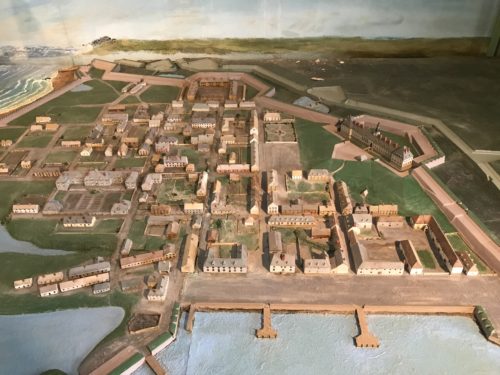
This shows the full fortress as it was in 1744.
Careful research was done in the 1980’s by the daughter of the senator who wanted to reconstruct it.
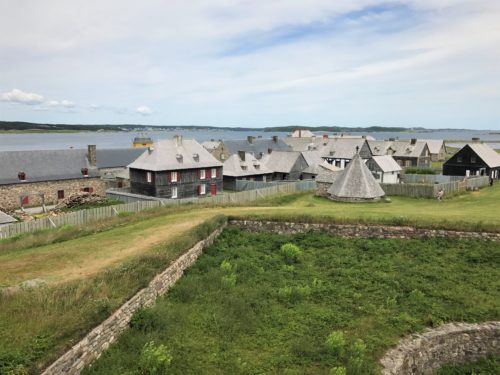
The town with the contemporary Louisbourg in the back ground
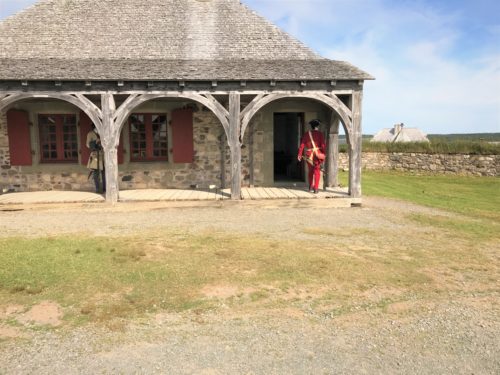
Guard house into the military compound
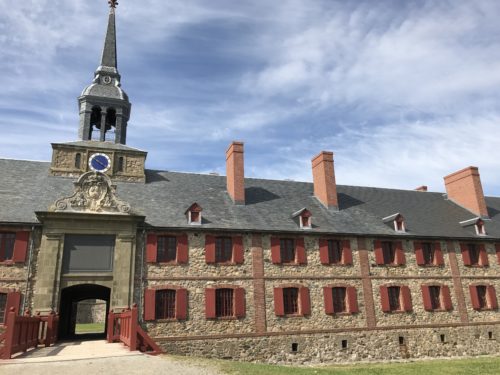
Several things in this building.
The governor’s apartment, the chapel, the King’s bastion barracks, and part was made into a museum of artifacts.
There are actually several places that housed museums
In the end, the treaty they struck gave the fortress back to the French. That lasted 3 years, until England itself came in – the same exact way (the second not so bright thing the French did was not learning from the first attack!). This time, everything was burned down and destroyed. I think it was 1758. Until the 1900’s, no one did anything with the property except in 1895 when some American group set up a monument to those who died in the 1700’s battles. This is why, when they started excavating in 1960, everything they found was from the 1700’s! They have LOTS of stuff. And they’re still finding things.
We were able to walk to an excavation site that was a burial ground. Nothing exciting when we visited, but we were told they took out a body the day before. The bones are sent to New Brunswick where they are studied and identified by using DNA testing. Then they will be sent back to the fortress grounds for proper re-burial.
We weren’t allowed to take pictures out of respect for the dead. But there was this very intriguing wildflower along the path. I have no idea what it is, but took 5 pictures to show the stages it grows.

The pod

Pod starting to open

The flower beginning to show
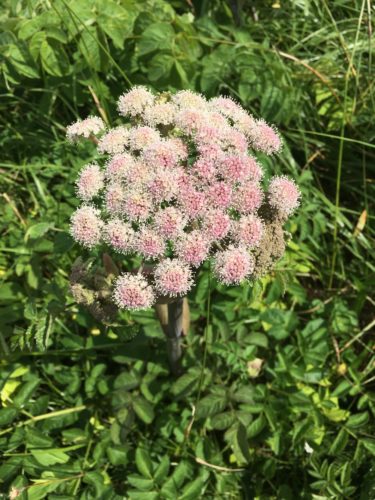
It’s pink when it first opens

Then it grows much taller and turns white
It took 23 years to reconstruct this portion of the fortress. It’s incredibly realistic (as far as we know 😊) and took extensive research and they worked with all the tools, etc. used in the 1700’s. That means skilled craftsmen. They also used over 1,000 former miners who had recently lost their jobs in the 1960’s.
Here are some random pictures we took:
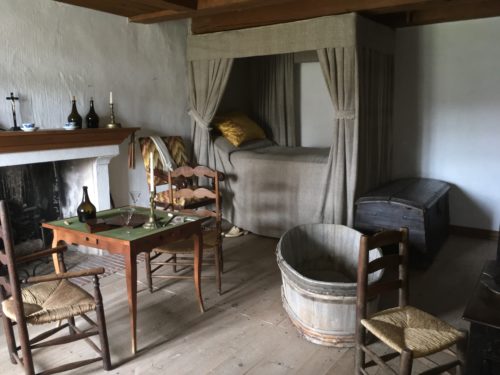
The beds were all pretty short. The average height for a man in those days was only 5’5″

Taken through a house window. The building outside is the ice house, used for storing meat and desserts
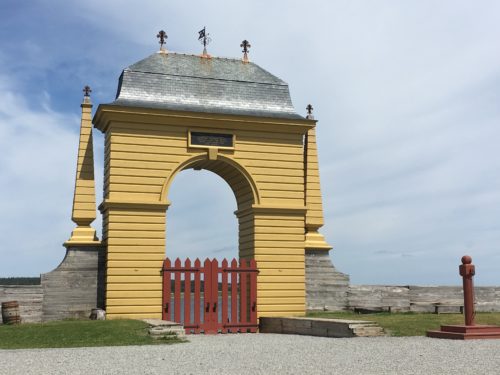
The main gate. The post out front and to the right is where they display the convicts.

The gardens had wide paths because the ladies’ gowns were so wide.
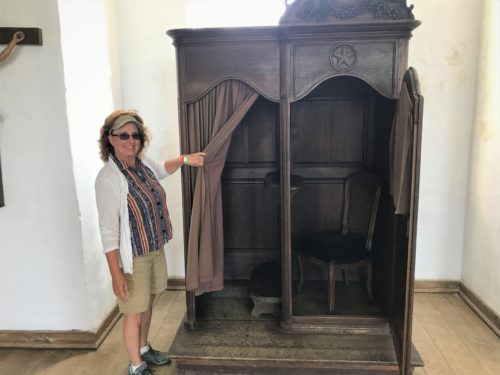
A confessional from that time period
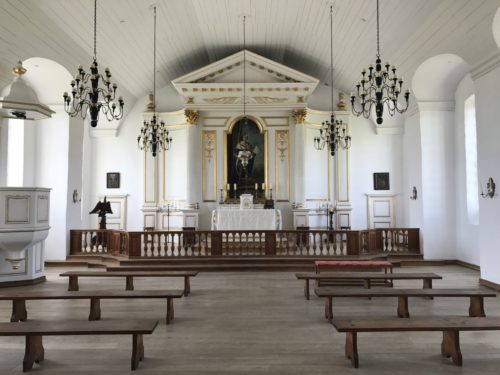
The chapel. Pretty nice I thought, tho the benches would get hard to sit on after awhile. . . .
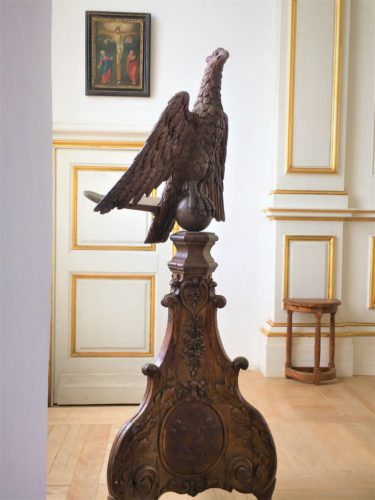
I don’t know what purpose this served in the chapel, but it was ornately sculpted. Also, we noticed that almost every room in every house had a crucifix somewhere.
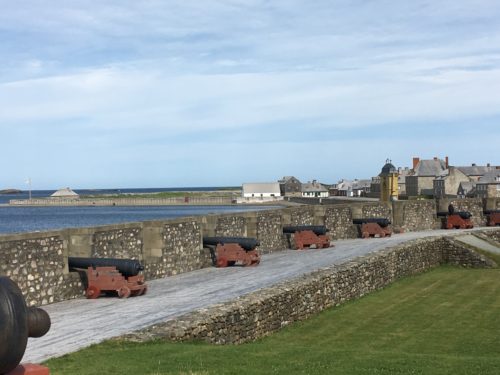
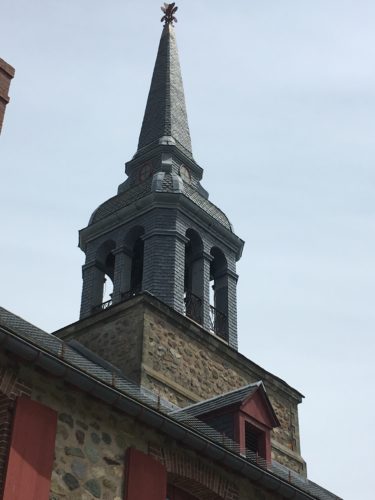
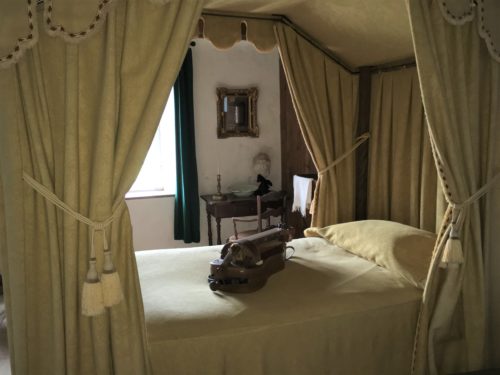
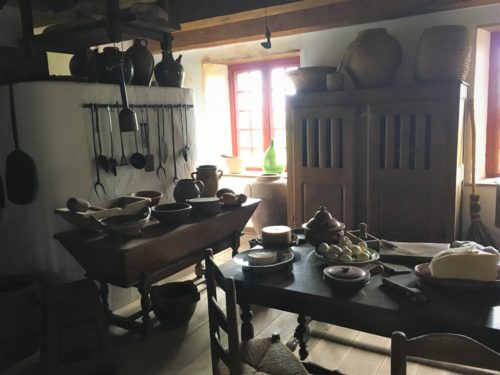
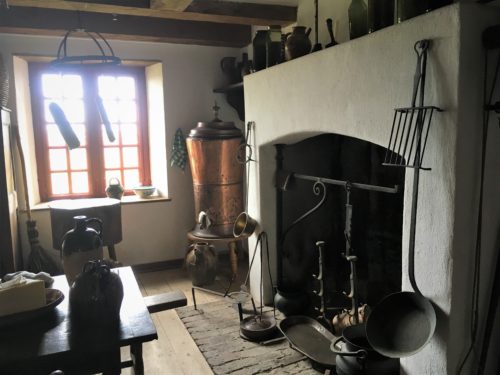
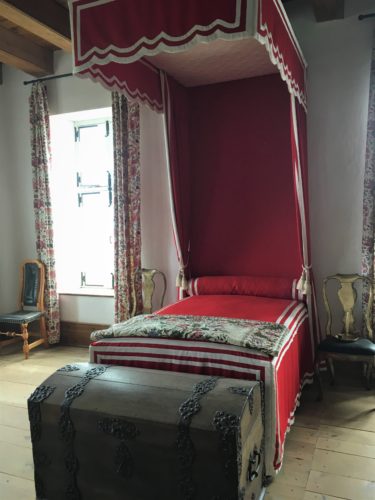
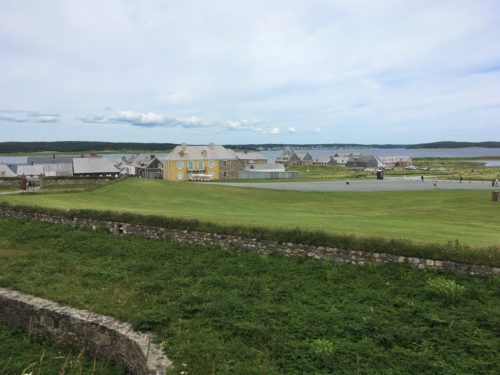

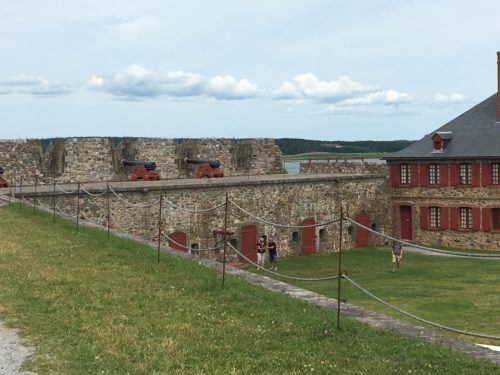
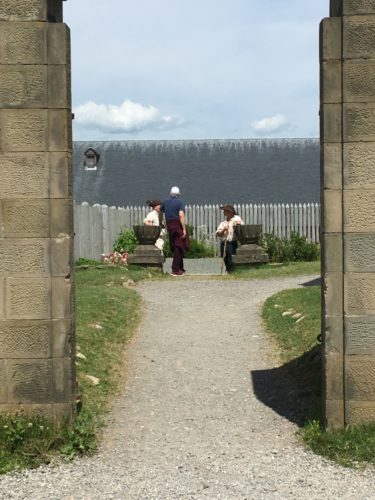
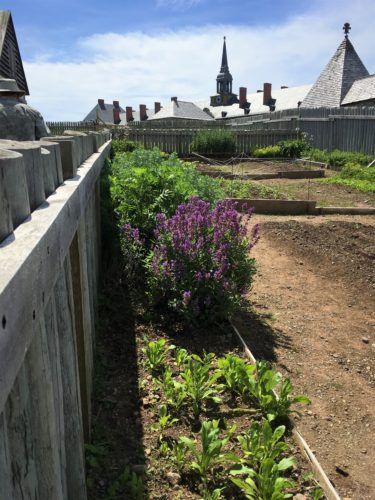
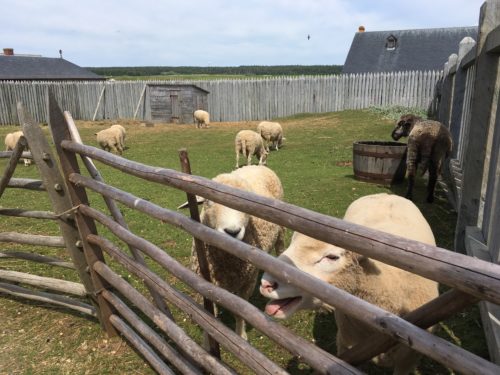
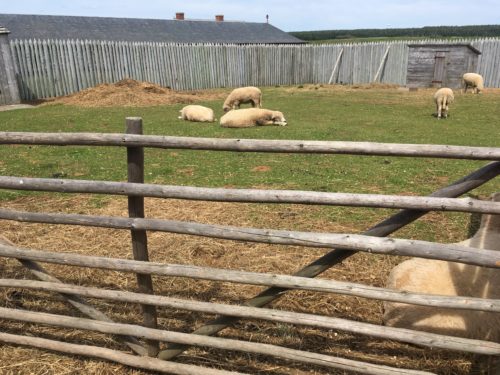
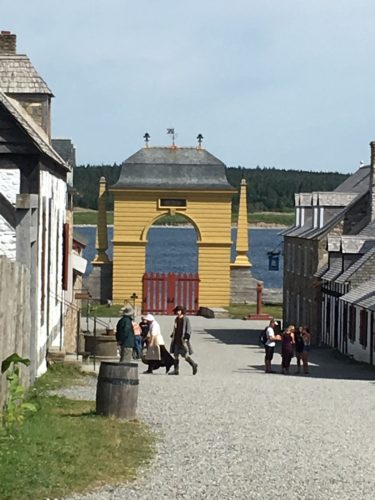
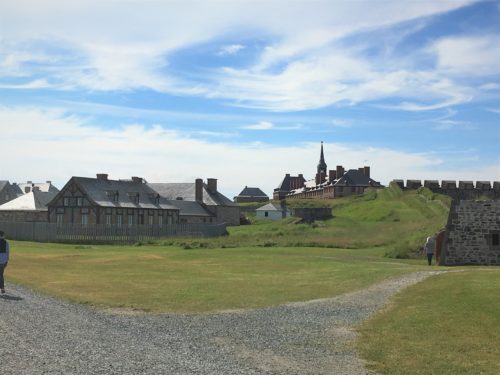
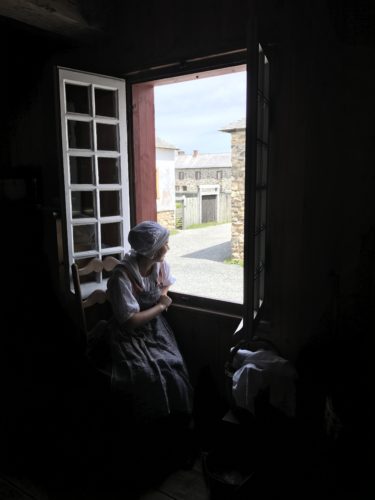
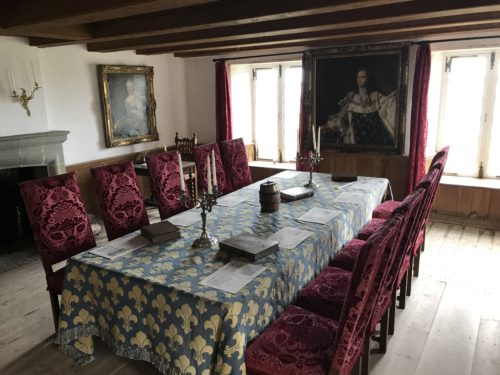


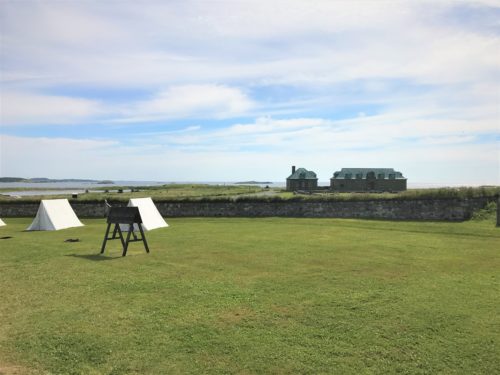
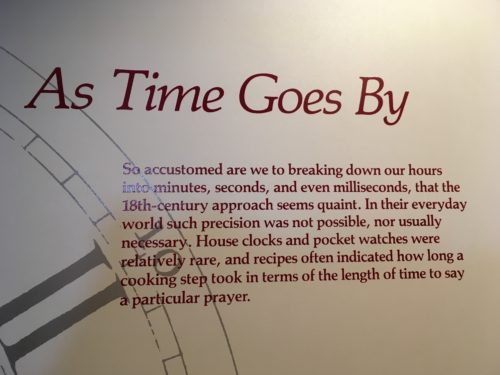
We found this tidbit interesting
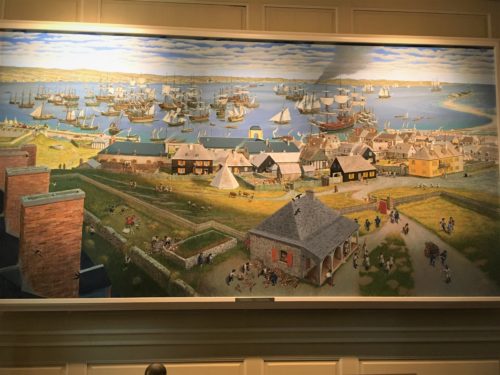
An artist painted these two pictures to depict life in the fortress.
I know you probably can’t look at them too closely, but they were amazing!
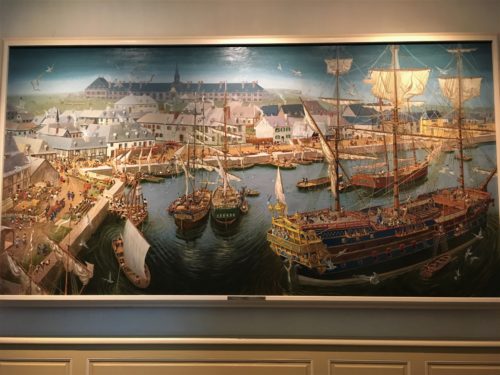
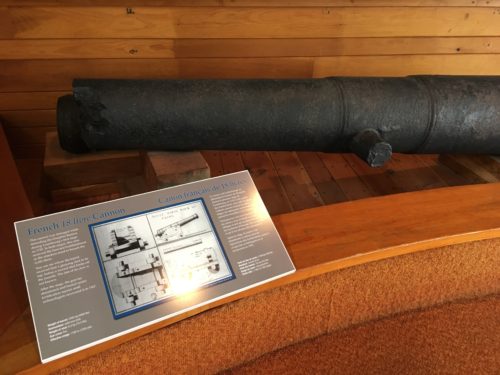
These two cannons were found on the grounds
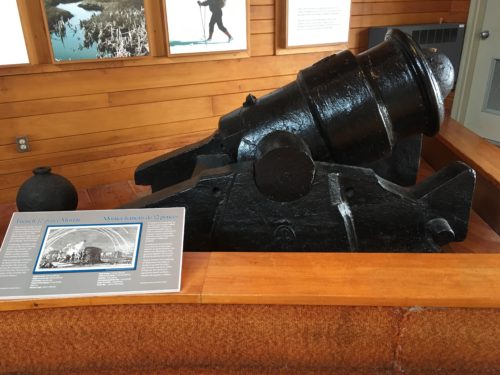

Both sides of a replica ship from the time period.
I had taken a picture of the plaque so I could give you info, but discovered I took the French side!
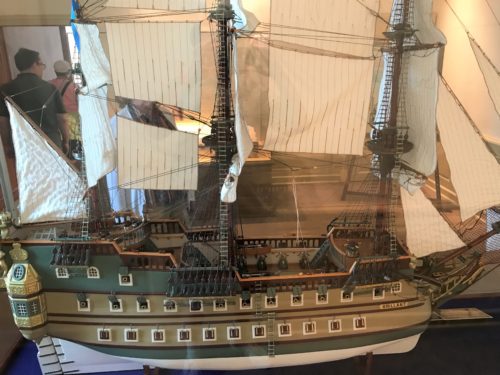
IMG_1724 Movie showing one of the demonstrations they did all day long. I think the troops need a lot more training! : )
Here’s a couple of additional things we learned:
- People only lived to 45-50. If a child lived to 5 they considered them healthy.
- There were 20 bars in town. Today, in the town of Louisbourg (across the water), there are none.
- The fortress had a governor and they lived by a hierarchy system.
- If you were arrested on a charge, you were always found guilty – whether you were or not. Punishment usually entailed a night in jail, a public display of walking to the town square with a sign around your neck listing your offense, and being shackled to a post for 2 hours a day for three or four days.
- The military personnel were not treated well. They received a new uniform and a pair of shoes once a year. If their shoes were damaged or wore out, they were required to buy their own. Their salary would only permit them to buy one shoe.
- Anything they purchased put them in debt.
- They signed on for a 6 year term. If they owned any money, they had to sign on for another 6. And so on. Most served a lifetime.
- They were given a 6# loaf of bread every 4 days. Now you may think that’s pretty good, but we saw the loaves. They’re about the size of those rye bread rounds you put spinach dip in. Their bread was extremely heavy! We bought a small one and I felt like I was carrying around a cannon ball.
- Any additional food, they had to buy.
- They slept 2 men to a bed.
- Most of the military were either prisoners or vagabonds in France, so this life was better than that.
- They only bathed once or twice a year. That’s everyone. Not just the military. Back then people thought it was healthier to not bathe. Ugh!!!
- There were no potatoes at that time. The vegetables we were served at lunch were carrots, onions and turnips.
Anyway, that’s enough for you. And me. The facts we encountered today, while interesting, were a bit overwhelming. Especially if you have a headache.
